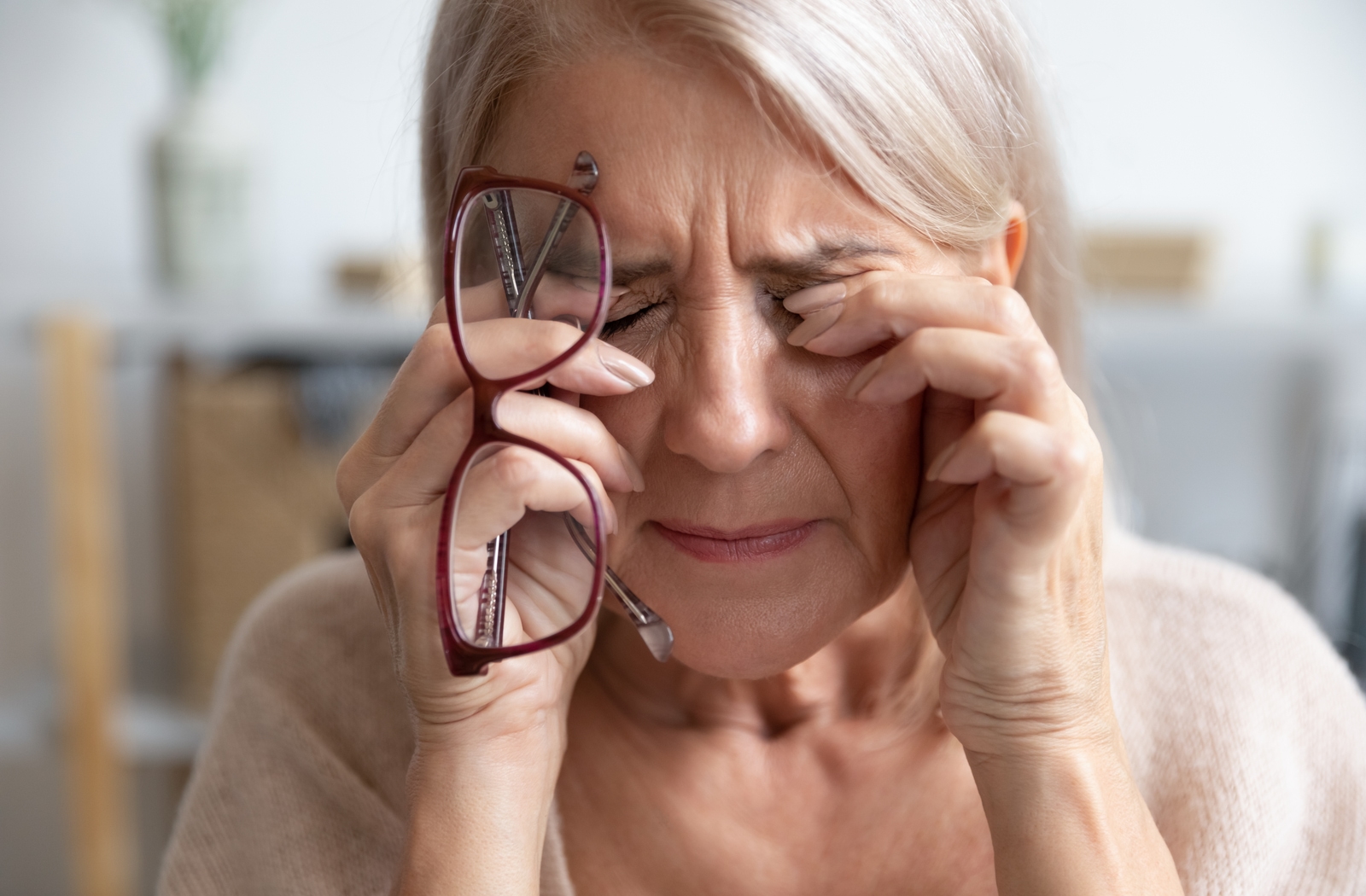I’ve just spent a couple of hours on my computer, and the words on my screen are beginning to blur. I have something called dry eye disease (DED), as do quite a few of my friends. Sixteen million Americans have it, but it’s particularly common among older people. Researchers say 15 percent of 70-somethings have dry eye, as do 20 percent of those, like me, who are over 80.
What is dry eye? When you blink, a film of tears spreads across the surface of your eyes, moistening them and clearing away debris. Problems develop when the glands in your eyes stop producing enough tears, or the tears are poor quality or they’re not staying on your eyes long enough. Anyone can get DED, but you’re more at risk if you’re older, female or wear contact lenses. (You’ll find a fuller explanation here.)
Blurry vision isn’t the only symptom of DED. If your eyes feel scratchy or gritty, if they’re red or they sting or burn, that could be dry eye. If you’ve become unusually sensitive to light, your eyes are watery or there’s mucus in or around them, those are symptoms too.
All kinds of things can cause dry eye. Allergies and autoimmune disorders can do it, as can a whole host of medications, including antihistamines, decongestants, antidepressants and diuretics. If you spend long periods, as I do, staring at a computer screen or smartphone, that can also give you DED, because while you’re staring, you blink only about a third as often as usual.
For a long time, doctors assumed dry eye was just a nuisance. I remember having a conversation with my eye doctor about it a few years ago, and neither of us took it seriously. She recommended over-the-counter eye drops and left it at that. Often, that’s enough. But over the past 18 months, my problem has gotten worse, and there’s also been a big change in attitudes. Both doctors and patients are now more aware of DED, and new treatments and medications have been approved.
It’s clear now that, though the disease can be mild and temporary, it can also become a chronic, debilitating problem. There’s no permanent cure, and, if it’s not treated, it can damage your cornea, though that’s rare.
If you suspect you have dry eye, and it seems to be a mild case, there are lots of ways to relieve symptoms. Doctors advise trying them one at a time, so you’ll know what works and what doesn’t.
- If your symptoms started suddenly, an eye irritant or allergy might be causing them. What’s new in your life that might have triggered the problem, and can you do something about it?
- When outdoors, wear wraparound sunglasses that shield your face at the top and sides to block wind and dry air.
- Drink lots of water.
- Use artificial tears regularly. These over-the-counter eye drops solve the problem for many people, but if you’re using them more than 4-6 times a day, get the ones that are preservative free (PF), because with frequent use, preservatives can make symptoms worse.
- Take eye breaks when you’re working at the computer for long periods. Try following the 20/20 rule: every 20 minutes, stop for 20 seconds and either close your eyes or stare at something 20 feet away.
- If you’ve been looking up at your computer screen, lower it, because when you look up, you open your eyes wider, inviting dryness.
- When your eyes are bothering you—especially at the computer—blink a lot.
- Don’t smoke. Research shows there’s a strong link between smoking and poor-quality tears.
- Apply a warm, wet compress to your eyes for five minutes twice a day. Moist heat helps keep the tear glands flowing.
- Once a day, clean your eyelids with an eyelid wipe or a bit of baby shampoo.
I’ve tried most of these tactics, and for a while they kept symptoms at bay. But then my frequent fuzzy vision began to interfere with my life, so I went to see a dry eye specialist. She described several possible treatments, including prescription eye drops and an in-office procedure that keeps your tears from draining away too quickly by plugging tiny ducts through which they drain.
She couldn’t tell me what was most likely to help because everybody’s different—we’ll have to figure that out by trial and error. She warned me that some of these therapies are expensive, and most health insurance plans don’t cover them. I decided to start with prescription eye drops.
If you need a dry-eye specialist, ask your primary care doctor or eye doctor to recommend one, or check the online directories of the American Optometric Association, the American Academy of Ophthalmology and the Optometrist Network.
Right now, my vision might be blurry at times, but my goal isn’t: I’m determined to get those DED symptoms back under control.

Flora Davis has written scores of magazine articles and is the author of five nonfiction books, including the award-winning Moving the Mountain: The Women’s Movement in America Since 1960 (1991, 1999). She currently lives in a retirement community and continues to work as a writer.



